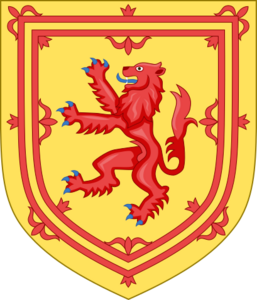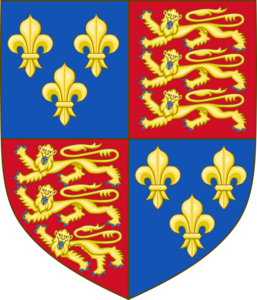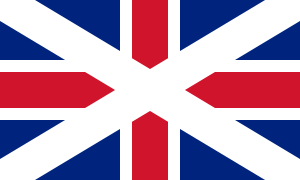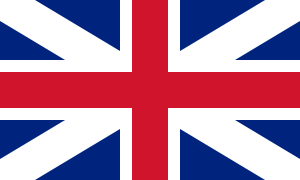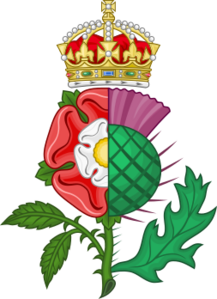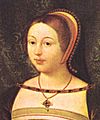Union of the Crowns facts for kids
The Union of the Crowns happened when James VI of Scotland also became James I of England. This meant that both countries shared the same king starting on March 24, 1603. Even though they had the same ruler, England and Scotland were still separate countries. They just had one person in charge of their big decisions, like talking to other countries.
This "Union of the Crowns" happened after Elizabeth I of England died. She was the last queen from the Tudor dynasty. James was her cousin. This union was a "personal union," meaning it was about the person on the throne, not about joining the countries into one. England and Scotland stayed separate until the Acts of Union in 1707. That's when they officially became one country called Great Britain.
Contents
How the Crowns Began to Unite
A long time before, in August 1503, James IV of Scotland married Margaret Tudor. Margaret was the oldest daughter of Henry VII of England. This marriage was part of a deal called the Treaty of Perpetual Peace. This treaty was supposed to end many years of fighting between England and Scotland.
The marriage was important because it meant the Scottish Stuarts could now be in line to become the English king or queen. At first, it seemed unlikely a Scottish prince would ever rule England. But some English leaders worried about this possibility. King Henry VII reportedly said that England would not be harmed. He believed Scotland would join England, like a smaller part joining a bigger, more important one.
However, this "perpetual peace" did not last. In 1513, Henry VIII of England (Henry VII's son) started a war with France. France then asked Scotland for help because of an old agreement called the Auld Alliance. So, James IV invaded England, leading to the Battle of Flodden.
Over the next few decades, England often attacked Scotland. They even burned its capital city, Edinburgh. As time went on, the question of who would rule England became very important. Queen Elizabeth I had no children. By the end of her reign, it was clear that James VI of Scotland was the most accepted heir. He was the great-grandson of James IV and Margaret Tudor.
James VI Becomes King
Starting in 1601, some English politicians secretly talked with James. They wanted to make sure he would become king smoothly after Queen Elizabeth I died. One of these important politicians was Sir Robert Cecil. He told James to be kind and respectful to the Queen. This worked well, and Elizabeth was pleased with James.
In March 1603, Queen Elizabeth was clearly dying. Cecil sent James a plan for how he would become king. Important forts were made ready, and London was guarded. Elizabeth died early on March 24. Within eight hours, James was announced as the new king in London. People accepted the news without any problems.
On April 5, 1603, James left Edinburgh to go to London. He promised to visit Scotland every three years, but he only returned once in 1617. He traveled slowly, stopping in towns along the way. Local lords welcomed him with big parties. People rushed to see him, relieved that his becoming king had not caused any trouble. When James entered London, huge crowds gathered. One person said the crowds were so big they "covered the beauty of the fields."
James's coronation in England happened on July 25. But the celebrations were limited because of an outbreak of the plague. A big parade with plays and performances was delayed until March 15, 1604. On that day, all of London came out to see it. One writer said the streets "seemed paved with men."
People in England had high hopes for James. Elizabeth's last years had been a bit disappointing. And for a country that had worried about who would be the next ruler for so long, the new king was a family man with sons. But James's popularity didn't last long. His first actions as king caused some problems. The biggest issue was his idea of what his title should be. James wanted to be King of Great Britain and Ireland.
In his first speech to the English Parliament on March 19, 1604, James clearly stated his goal. He said, "What God has joined, let no man separate." He saw himself as the husband and the whole island as his wife. He wanted to unite England and Scotland fully.
However, the English Parliament was not excited about this idea. They wanted to protect the old name and country of England. They brought up many legal reasons why it would be difficult. James was used to the Scottish Parliament, which was easier to control. He was surprised by how stubborn the English Parliament was. He decided to just declare himself King of Great Britain on October 20, 1604. This only made Parliament more upset. Even in Scotland, people weren't very keen on the idea. Both parliaments discussed it for years but never fully agreed.
Why Some People Opposed the Union
In Scotland, many people worried that the smaller country would be swallowed by the larger one. They looked at Ireland as an example. Ireland was called a kingdom, but by 1601, it was mostly controlled by England. The difference in power between Scotland and England had been clear for a while.
A Scottish writer named John Russell had first been excited about the "happy and blessed Union." But he later warned James not to let it "begin with a comedy, and end in a tragedy." He worried that the union would only be in words, not in reality. He feared that England would become great, and Scotland would be forgotten and left empty. He reminded James that Scotland was his "oldest empire" and should share in his blessings.
The Scottish Parliament also shared these fears. Its members told the King they trusted his plans would not harm Scotland's old laws and freedoms. They said any harm would mean Scotland "could no more be a free monarchy." James tried to tell his new English subjects that the union would be like the one between England and Wales. He even said he would force Scotland to agree if they refused.
Working Together (or Not)
In June 1604, both parliaments passed laws to create groups of people called "commissioners." Their job was to explore how to make a "more perfect union." James ended his first Parliament meeting by scolding those who opposed him. He said anyone who thought of separating the countries should "be buried in the bottom of the sea."
The Union Commission made some small progress. They worked on things like border laws, trade, and who counted as a citizen. The borders between England and Scotland were even called the "middle shires." But free trade was a big problem. People in the English Parliament worried that Scottish people would come to England in large numbers. They feared this would take away English jobs and cause problems like "death and dearth" (famine).
The question of what rights people born after March 1603 had was decided by the courts, not Parliament. In a case called Calvin's Case (1608), the courts ruled that all the King's subjects had property rights under English law.
National Dislike
Many Scottish nobles and others came to London hoping for important government jobs. In 1617, an English courtier named Sir Anthony Weldon wrote about Scotland. He said the country was "too good for those that possess it" but "too bad for others to be at the charge of conquering it." He also made fun of the Scottish people.
A comedy play called Eastward Ho also made fun of Scots. It suggested that a hundred thousand Scots should go to the new Colony of Virginia. It said that Scots were "disperst over the face of the whole earth" but were good friends to Englishmen when they were away from England.
Because of these kinds of jokes and insults, anti-English writings became common in Scotland. In 1609, the king passed a law threatening severe punishments for anyone who wrote "slander and malign and revile the estait and countrey of England."
In October 1605, an ambassador from Venice in London noted that the idea of a full union would likely be dropped. He said the king knew it couldn't happen because both sides were too stubborn. The king decided to put the issue aside, hoping that time would heal the "ill-humours."
New Symbols
King James created new coats of arms and new coins. But creating a single national flag was difficult. Designs that one side liked often offended the other. James finally announced the new Union Flag on April 12, 1606. This flag combined the St George's Cross (England's flag) with the St Andrew's Saltire (Scotland's flag).
However, Scots who saw the English cross on top of their own flag created their own "Scotch" design. In their version, the Scottish Saltire was on top. This Scottish design was used in Scotland until 1707. For many years, ships from England and Scotland continued to fly their own separate flags, even after the king's announcement. The Union Flag only became commonly used later, during Oliver Cromwell's time as ruler.
-
Arms of the Kingdom of Scotland, before 1603.
-
Arms of the Kingdom of England, before 1603.
-
Arms of the Kingdom of Ireland, before 1603.
-
The flag of the Kingdom of Scotland.
-
The flag of the Kingdom of England.
-
Union Flag used in Scotland from the early 17th century to 1707.
-
Union Flag used in England, 1606–1707.
-
This badge combined the Tudor rose with the Scottish thistle. King James used it as a royal symbol.
Images for kids
See also


